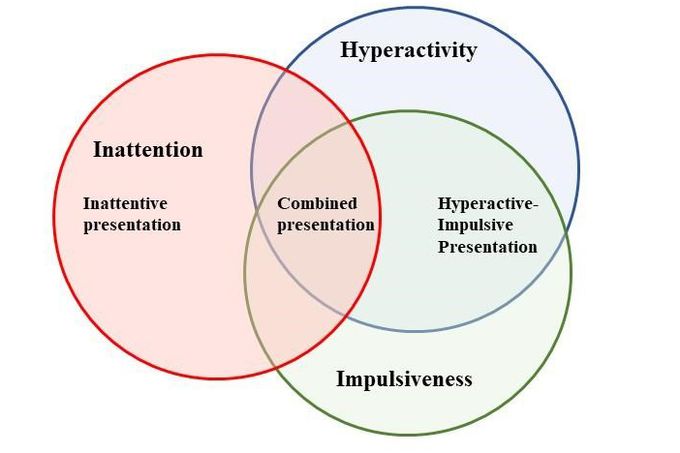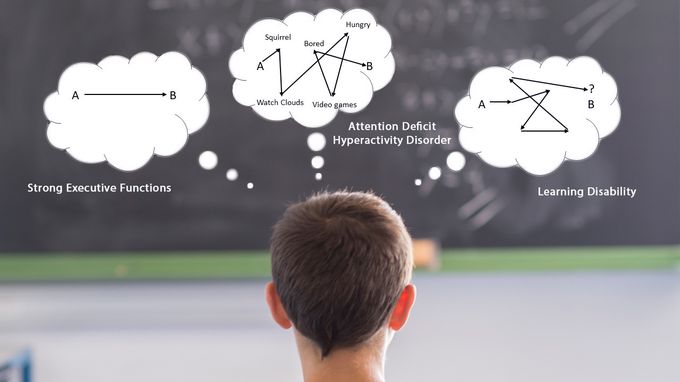Confusing ADHD with Learning Disabilities: They Are Not the Same Thing!

What is ADHD?
If a person did an online search for ADHD, a vast amount of information would pop up – some of it true and some of it not. Some of that information would talk about what causes ADHD (and no, diet and bad parenting do not cause ADHD). Also, some of that information would be about how to “control” it. I prefer the word “manage.”
The one thing that is for certain is how ADHD is defined. By definition, ADHD is a neurodevelopmental disorder that runs in families and impacts a person’s thinking, feelings, and behaviour. But what does that mean exactly? It means that the prefrontal cortex of the brain does not perform at the expected level based on an individual’s age. The prefrontal cortex regulates decision making, emotions, and behaviour. When compared to children of the same age, a child with ADHD will behave in a manner that is not the same as others the same age. For example, a child with ADHD may be impulsive, easily distracted, have difficulties focusing, and/or struggle with emotional control compared to a child of the same age. So ADHD is considered to be a Developmental Disorder of Executive Functioning.
ADHD is one of the most common mental health diagnoses and the most prevalent psychiatric disorders in Canada. Worldwide, ADHD occurs in 4% of adults and 5% of children. ADHD is a chronic disorder, which means it lasts through the lifetime and does not just “go away.” The interesting thing is that ADHD is also the most treatable disorder and continues to be under-recognized and underdiagnosed.
There are three main presentations of ADHD:
- “Inattentive” (ADHD-I) - A child will seem uninterested or like she or he is not listening. A child will have difficulties staying focused on certain tasks, may seem forgetful, may tend to lose things, and/or be disorganized.
- “Hyperactive-Impulsive” (ADHD-H/I) - Children with hyperactive-impulsive tendencies are often fidgety, on the go, and hard to nail down. You may ask yourself, “what child isn’t like that?”. My answer is that a child with ADHD will find it difficult to stay seated or focused when asked to, even after multiple requests. Children with ADHD-HI can be very talkative and will tend to interrupt others even after being asked to be patient.
- “Combined” (ADHD-C) - This is the most common presentation of ADHD. Children with ADHD-C possess both ADHD-I and ADHD-H/I characteristics.

Children with ADHD are still capable of completing simple to complex tasks, but the ability to stay focused on the task can vary. A child may finish a complex homework assignment one day without a struggle and spend hours on a simple task the next day. Another example is that a child may complete all their responsibilities quickly and efficiently one day but not the next. To put it simply, a child with ADHD can be consistently inconsistent.
People wonder if a child can grow out of their ADHD. Although ADHD symptoms can change as a child grows, the way ADHD affects a person is often dependent on the severity of the ADHD. Medication can help but when teamed with a supportive environment, strong coping strategies and passion for doing what the individual enjoys, the impacts of ADHD can be reduced.
What is an LD?
A Learning Disability, or LD, is a neurodevelopmental or brain-based disorder that affects people with average or higher intelligence. An LD should not be mistaken for an intellectual disability. Young people with LDs are just as smart as their peers but process information differently. It just means that the process of learning can take longer or the messages do not get to their destination in the brain in a manner that allows for quick neural processing.
LDs are very common. Studies from around the world show that LDs affect 5-15% of the population. Research suggests that 80% of LDs are associated with reading. Since information is often processed this way, this can make understanding information more difficult for a young person with an LD.
LDs are not limited to just reading. Learning Disabilities can make it difficult to read, write, spell, and do calculations. LDs can also affect the ability to organize and recall information, listen and speak and can impact the short-term and long-term memory. LDs can also impact a young person’s processing speed and executive functions (But wait! Isn’t that associated with ADHD? Yes, it sure is, but there is a difference! Keep reading!).
How an LD occurs is not well understood. But, research shows that genetic and environmental factors can alter brain development. These factors can alter how the brain is wired to process information. Although we still do not know what causes LDs, we do know what does not cause them. They are NOT caused by
- ineffective teaching
- poor parenting
- economic situation
- health-related issues
- lack of instruction
- sensory deficits.
The impact of an LD on a person varies. The impact can range from mild to severe and may only affect a specific academic ability. However, for children with one severe LD or multiple LDs, the impact can radiate beyond their academics and affect their social interactions. These complications can make diagnosing an LD tricky.
In order for a psychologist to diagnose an LD (and yes, only a psychologist can properly diagnose an LD), he or she must rule out other possible reasons that a child will struggle at home or school. These reasons could be due to an intellectual disability, ADHD, or a mental health concern. To make things more complicated, children with LDs often meet the diagnostic criteria for other disorders. The most common ones are:
- ADHD
- depressive disorders
- anxiety disorders
- language disorders
- Autism Spectrum Disorders
- Developmental Coordination Disorder
- behavioural disorders.
Learning Disabilities last for life but a child can learn strategies that will improve his or her ability to manage the LD. A child can also access tools to help manage the LD.
ADHD and LDs are Not the Same
So, what’s the difference between ADHD and an LD? An LD makes it difficult to acquire specific skills such as reading skills or math skills. By contrast, ADHD impacts more global skills and executive functions like the ability to focus, the ability to control emotions, and the ability to control impulsive behaviour.
Since learning requires the use of executive functions (especially the ability to focus, pay attention, engage in tasks, and use working memory), it can look a lot like ADHD when a child is struggling with an LD. It is easy to confuse ADHD and LDs as being the same thing. The characteristics of an LD though, affect one or more specific cognitive processes including executive functions.
Let me give an example. Imagine a child who tries to understand a math topic, tries to connect ideas in a written paragraph, or tries to understand social cues, but struggles to make what is learned stick in his or her brain. These are some symptoms of an LD. The child may get frustrated, zone out, may stop paying attention, and maybe lash out at others. These are some effects that result from the LD.
Now imagine another child who has the desire to learn but gets frustrated quickly, zones out easily due to distractions, fidgets so much he or she can’t focus, or is triggered by something and emotionally lash out. These are some symptoms of ADHD. The result is that the child may have difficulty learning a math topic, connecting ideas in a written paragraph, or struggle with social cues. These are some effects of ADHD.
It does not mean that the child has an LD because he or she has trouble with math or often misinterprets social cues. It also does not mean that the child has ADHD just because she or he is impulsive, cannot focus for long periods of time, and is inattentive. A child with ADHD may complete a math assignment incredibly fast one day and take forever the next. Remember, a child with ADHD is consistently inconsistent. A child with an LD may have the knowledge to do the same math assignment but cannot execute the method required to get to the answer without extensive effort and support.

Since ADHD and LDs share executive functions as a common factor, it is common for a young person to have ADHD and an LD. Experts estimate that one-third to one-half of young people diagnosed with ADHD also have an LD. This is called comorbidity which is defined as the simultaneous presence of two or more disorders in a person. For any child with ADHD, an LD, or both, the struggle to manage their executive functions is difficult because learning requires the use of executive functions, especially the ability to focus, pay attention, engage in tasks, and use working memory.
If a young person has been diagnosed with ADHD and an LD, it is important that we manage both the ADHD and the LD. For example, if your child is on medication to help manage the ADHD, his and her problems associated with the LD will persist. If the young person is receiving assistance for an LD, the young person will not fully benefit if he or she is struggling with regulating his or her executive functions.
An important thing to remember is that schools use many strategies to help children with ADHD, an LD, or both learn more effectively. We can also help by increasing our knowledge of ADHD and LDs and providing a supportive home environment.
For my son, I explained to him that his brain was made just for him and required a special and unique learning approach. We turned educational opportunities into adventures that he and I could do together. Sometimes it was a struggle and required a lot of patience. The best part was it improved his abilities, my approach in understanding his challenges, and, most of all, our relationship.
For more information on understanding ADHD and LDs, go to:
- Centre for ADHD Awareness Canada (CADDAC)
- Understood
- The Difference Between ADHD and Executive Functioning Issues (Understood.org)
- E-Book: Executive Function 101 (Understood.org)
- Learning Disabilities Association of Canada
- Learning Disabilities Association of Alberta
- Foothills Academy’s Parent Workshops, Online Learning and Articles
